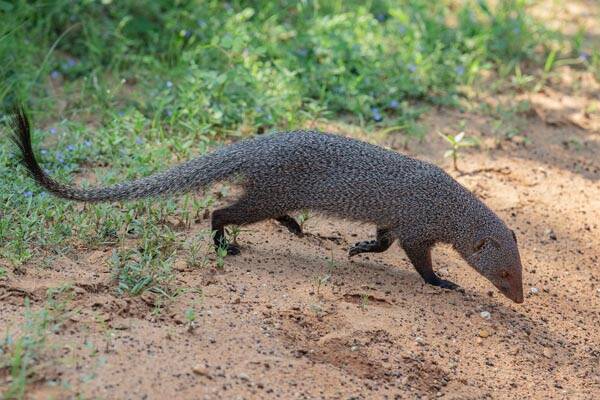Herpestes edwardsii
IUCN
LCBasic Information
Scientific classification
- name:Herpestes edwardsii
- Scientific Name:Herpestes edwardsii,Indian Gray Mongoose
- Outline:Carnivora
- Family:Meerkat
Vital signs
- length:45-60cm
- Weight:1.5-4kg
- lifetime:7-12years
Feature
Good at controlling the number of venomous snakes and rats
Distribution and Habitat
They mainly live in the Indian Peninsula, including India, Pakistan, Nepal and the island nation of Sri Lanka.
They live in a variety of environments, from cultivated land to tropical jungles.
Appearance
The gray mongoose has a slender body, long, fluffy silver-gray fur, very short legs, and scent glands near the anus. The body is 38 to 46 cm long, the tail is 35 cm long, and the weight is between 500 grams and 4,000 grams. Each foot has five toes with curved claws.
Details
The gray mongoose, scientifically known as Herpestes edwardsii, is a lone ranger that likes to wander around in the early morning and evening in search of reptiles. They move very quickly, as if they are anxiously looking for something; they rarely climb trees. The gray mongoose is good at attacking venomous snakes, mainly using its agility to attack the head of the venomous snake. It can continuously attack the venomous snake for more than an hour.

Gray mongooses are natural opportunists, eating mice, lizards, snakes, beetles, birds, eggs, and fruits. In India, they also prey on hares, chickens, and partridges. In Hawaii, they also dig for aquarium/52-marine-animals.html">marine animals on the beach after low tide. Their main natural enemy is the leopard.
In the native place of the mongoose, it is a good hand at controlling the number of venomous snakes and rats, but in the introduced place, it has caused damage to the original ecosystem.
Listed in Appendix I, II and III of the Convention on International Trade in Endangered Species of Wild Fauna and Flora (CITES) 2019 Edition Appendix III.
Protect wild animals and eliminate game.
Maintaining ecological balance is everyone's responsibility!








